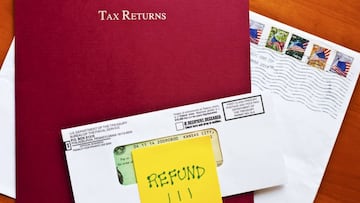Is a bonus stimulus check coming based on an IRS Tax return?
Changes made to the US tax code under the American Rescue Plan make many eligible for additional funds, but who qualifies? Our team took a look.

The American Rescue Plan (ARP) injected over a trillion dollars into the economy, billions of which will end up in the pockets of American taxpayers. Compared to previous years, the changes made to the US tax code under the ARP make many in the US eligible to receive more substantive returns. While these additional funds are not a “stimulus check,” per se, they have begun to be distributed or may come as a part of an individual's tax refund. Pieces of the legislation that make some in the US eligible for payments include:
- changes to the amount of money in unemployment benefits able to be taxed by the federal government;
- allocation of funds to send supplemental payments to ensure that stimulus check payments align with 2020 tax information; and
- the enhancements and restructuring of the Child Tax Credit which increases eligibility for the credit and the amount distributed to families.
Who qualifies for these additional payments?
Read More
Unemployment benefits
After the passage of the American Rescue Plan, those who received unemployment benefits were able to exclude $10,200 in unemployment benefits from being taxed. The IRS announced that more than thirteen million people who had filed their taxes before the passage of the law would have their returns automatically adjusted and be sent a check with the difference. For those who form part of the millions eligible for a readjustment to their return, the IRS has stated it has begun sending adjusted returns. A 4 June, press release from the IRS stated that it had “reviewed over 3.1 million returns, with more than 2.8 million receiving refunds.” Later this month it plans to announce details on the next batch of payments and will continue by working through simple returns, then moving onto more complicated refund situations.
Throughout the summer it will continue to send the remaining checks and to ensure taxpayers are aware they are eligible to receive a payment of this nature, the agency will send letters within thirty days of the adjustment being sent, “informing them of what kind of adjustment was made (such as refund, payment of IRS debt payment or payment offset for other authorized debts) and the amount of the adjustment.”
Various online tools exist to help individuals figure out exactly how much money they will be entitled to. This calculator created by Pacific Service is structured as a simplified version of the IRS' 1040 tax form. By filling in the relevant information you can estimate how large a refund you have coming.
Supplemental/“Plus Up” Payments
When the IRS sent the first and second stimulus check, some of the information available to the agency was out of date. The American Rescue Plan allocated funding to ensure that eligible taxpayers were adequately compensated based on their 2020 tax return information. For example, if a family had a baby after they filed their 2019 tax return, they would be eligible for additional funds as larger checks were sent to those with dependents.
To date, the IRS has sent eight million of these supplemental payments and will continue to do so as they review tax returns submitted for 2020. In the most recent batch of stimulus checks and supplemental payments, paid by the IRS, the agency distributed more than 1.1 million “Plus-Up” payments, bringing the total amount sent to $2.5 billion.
Child Tax Credit
The IRS will begin sending payments associated with Child Tax Credit on 15 July. The changes made to the structure of the credit make eighty-eight percent of families in the US eligible to receive the benefit. Families can expect to receive $300 for each child under six, and $250 for children between the ages of six and seventeen through December. The remainder of the credit will be distributed after a 2021 tax return is submitted next Spring.






